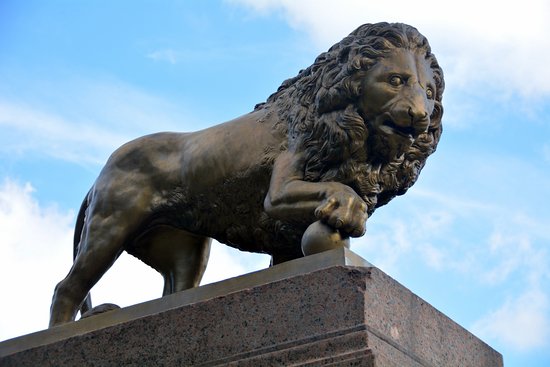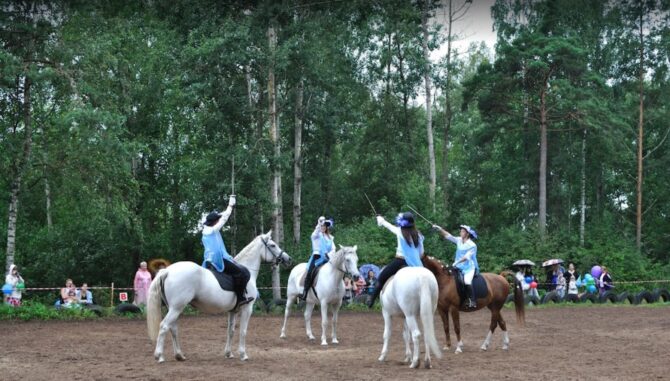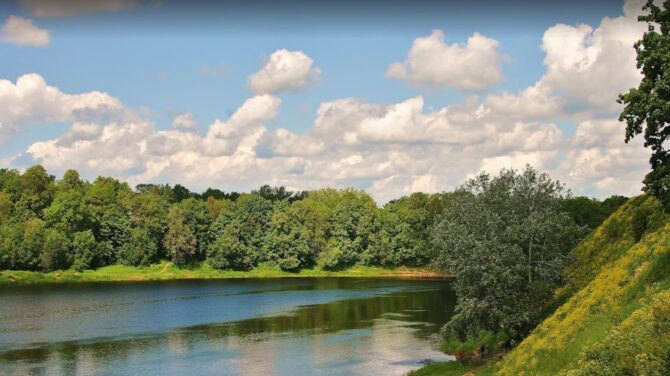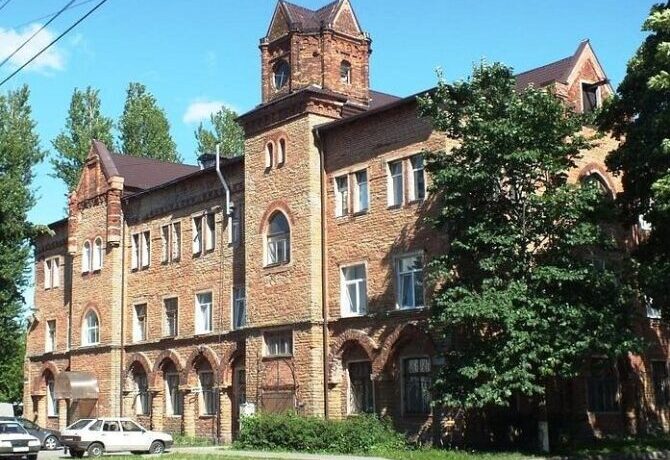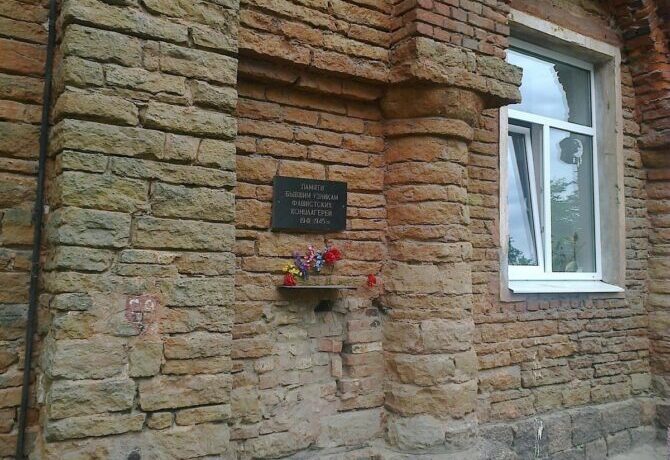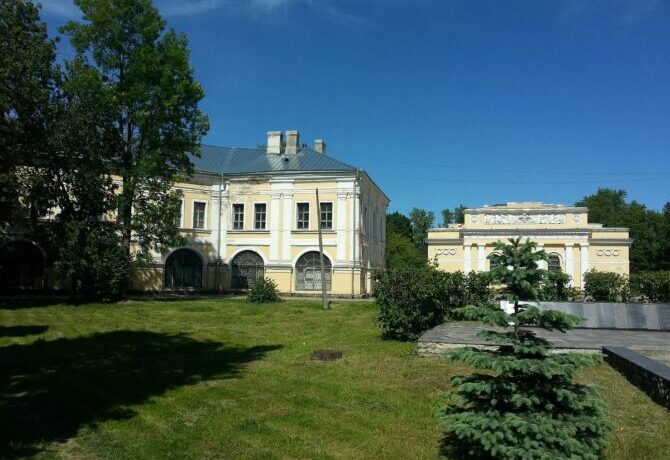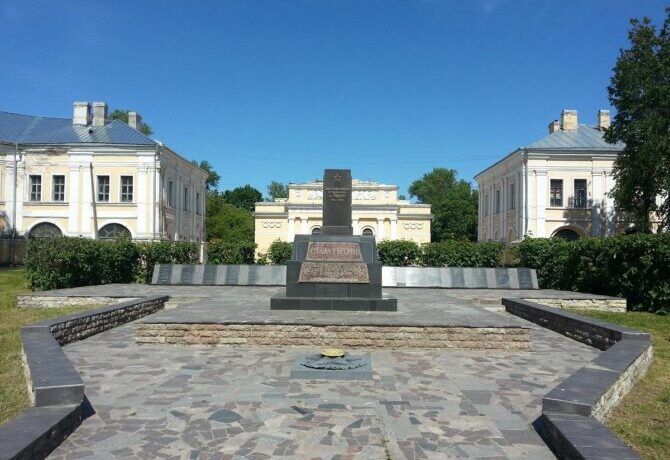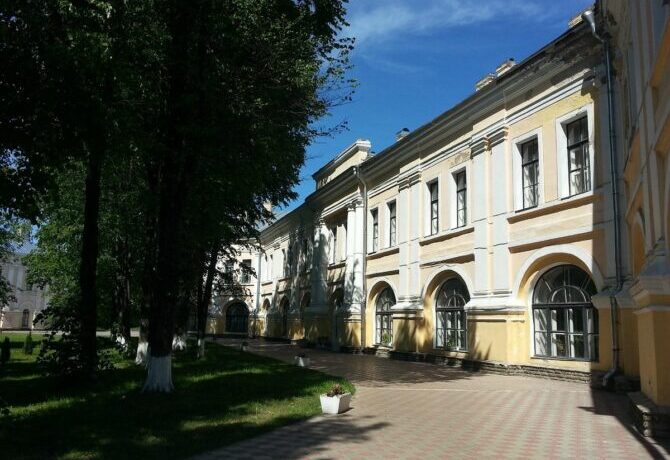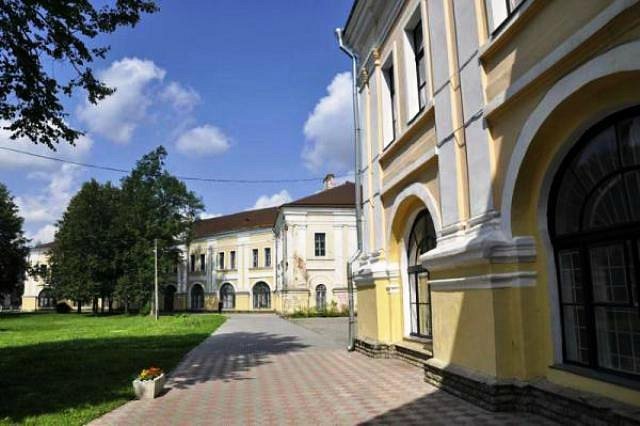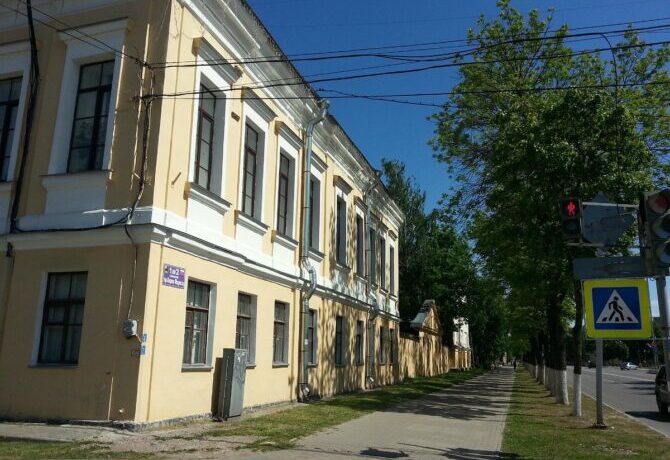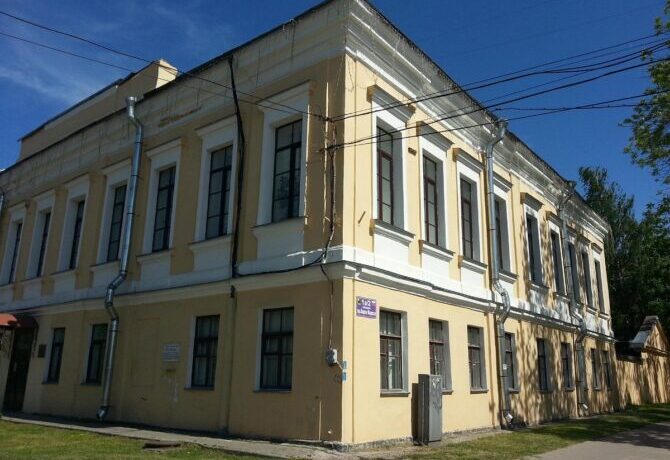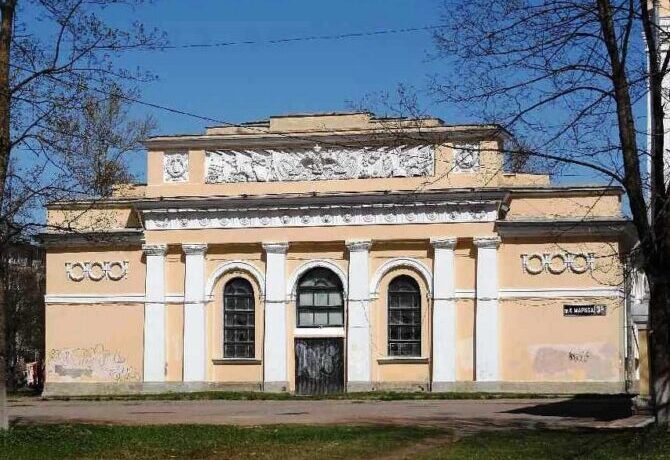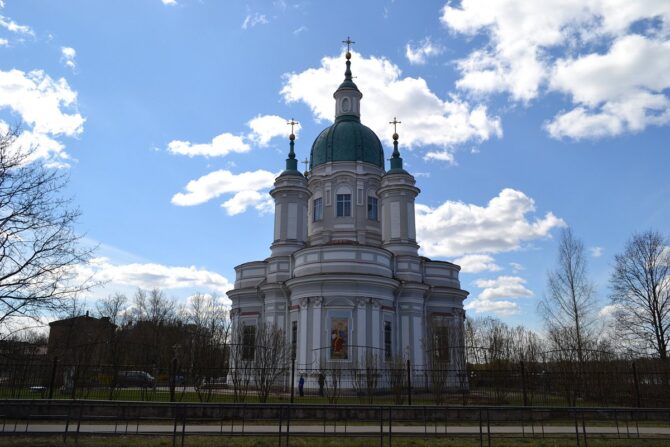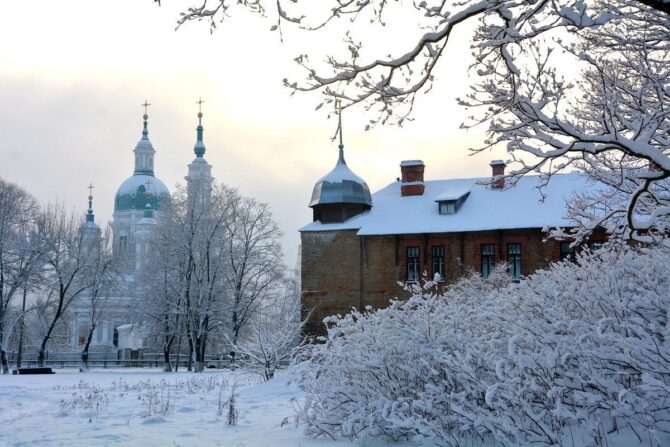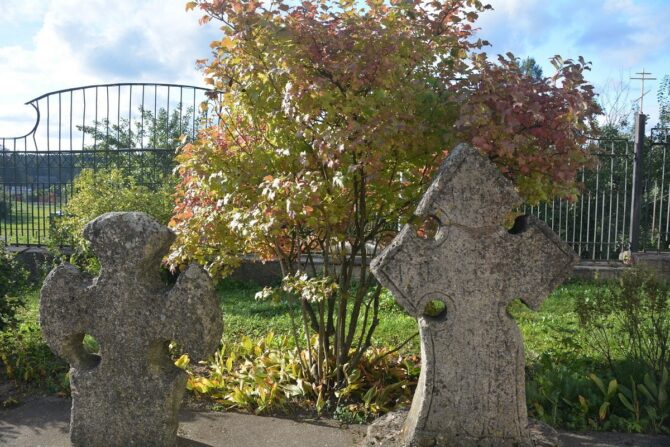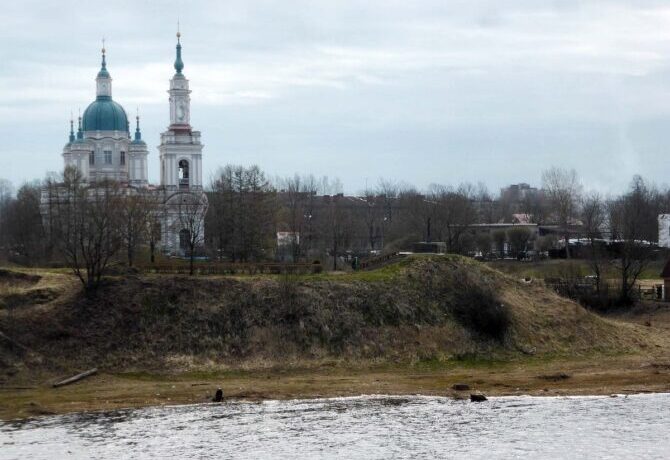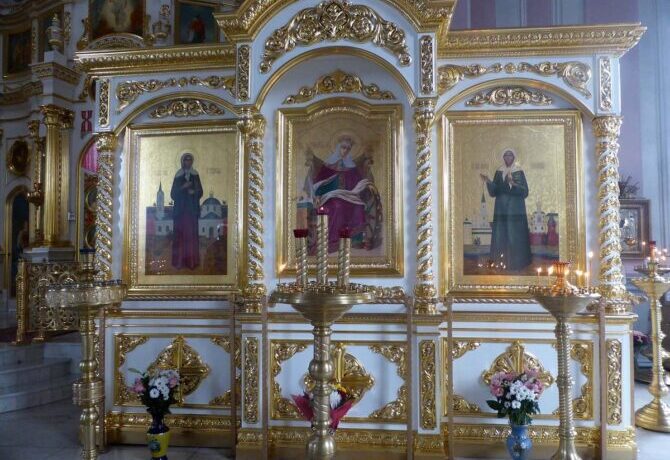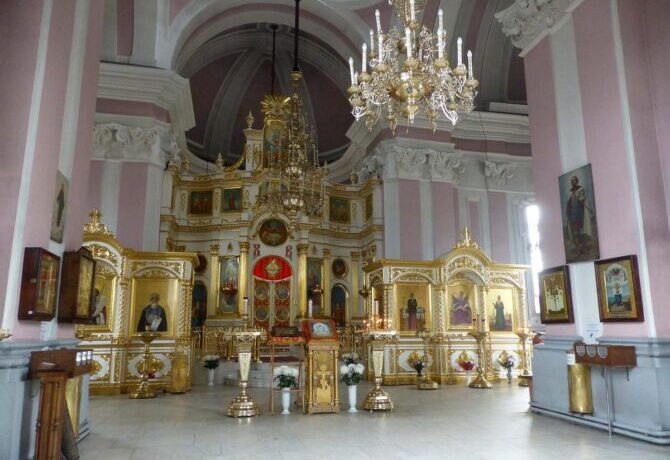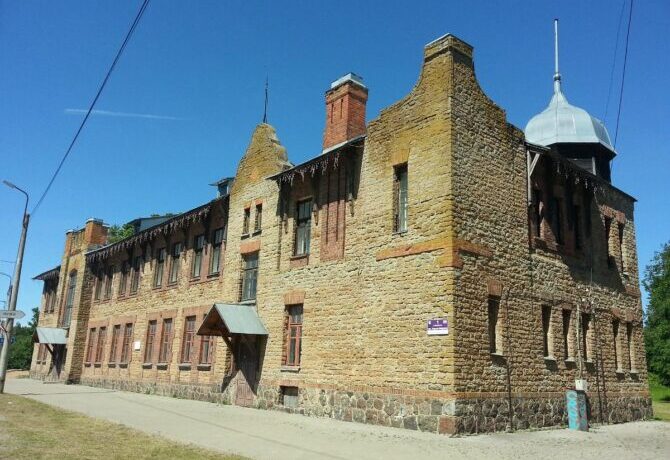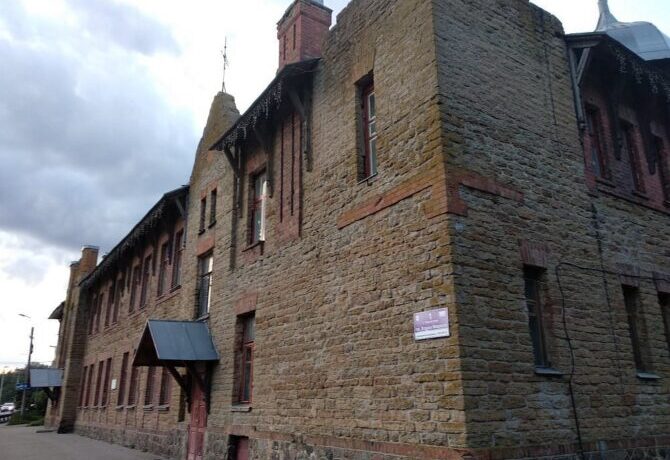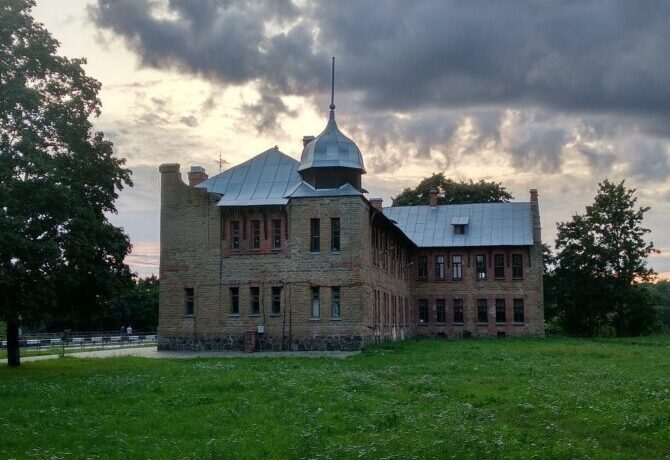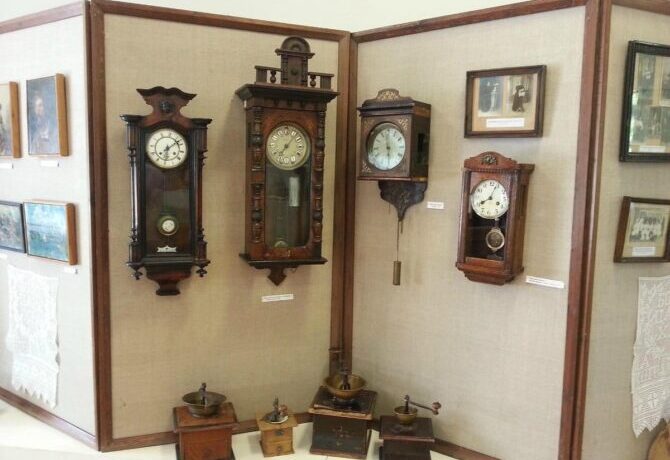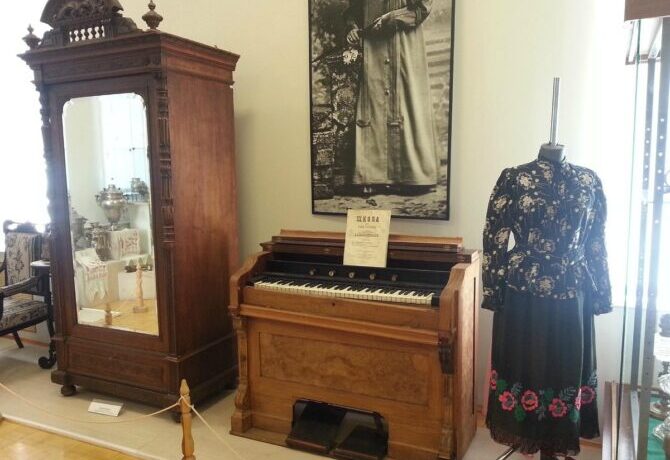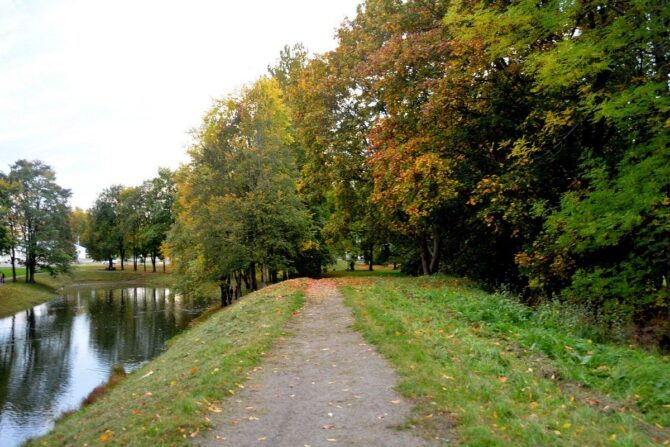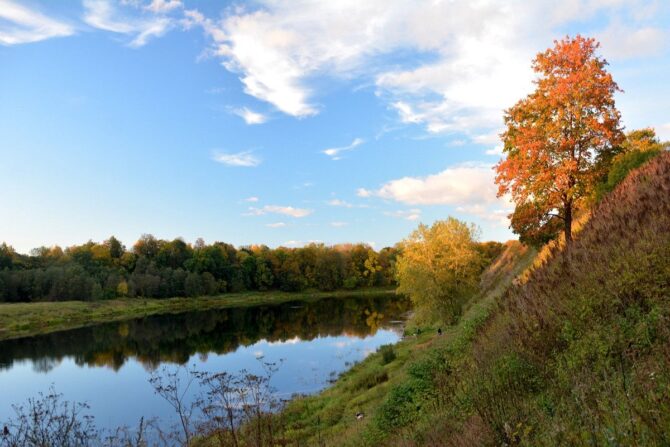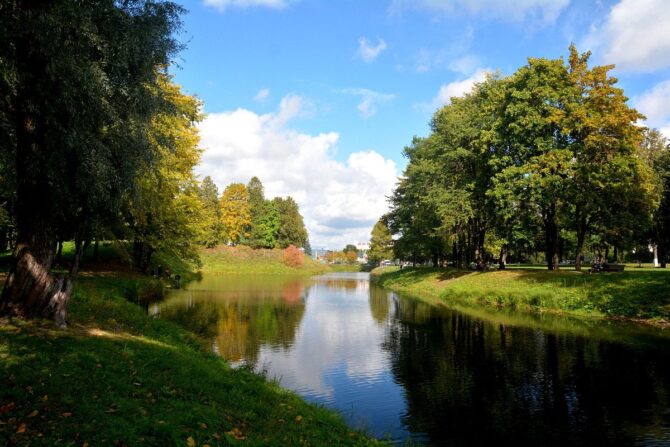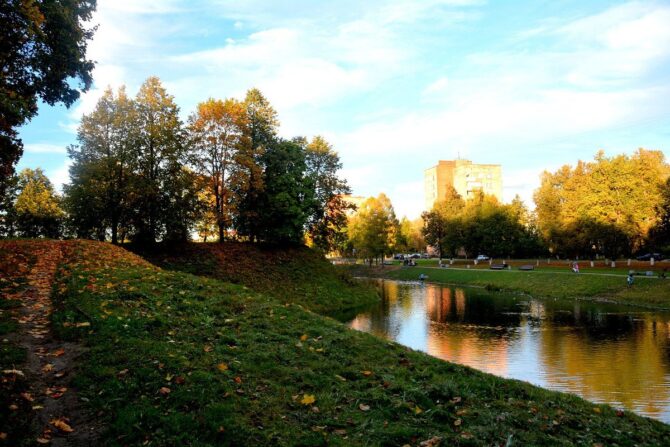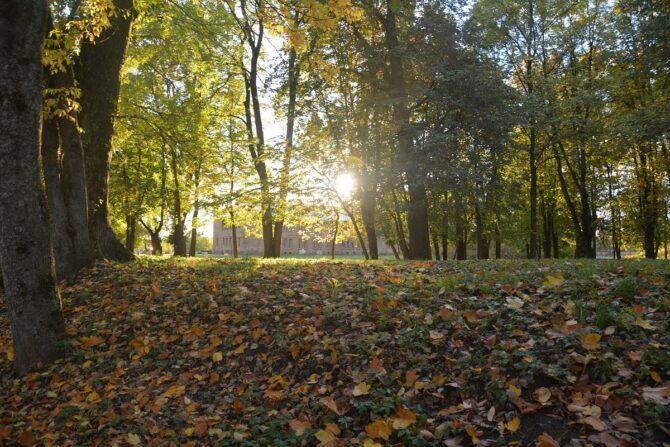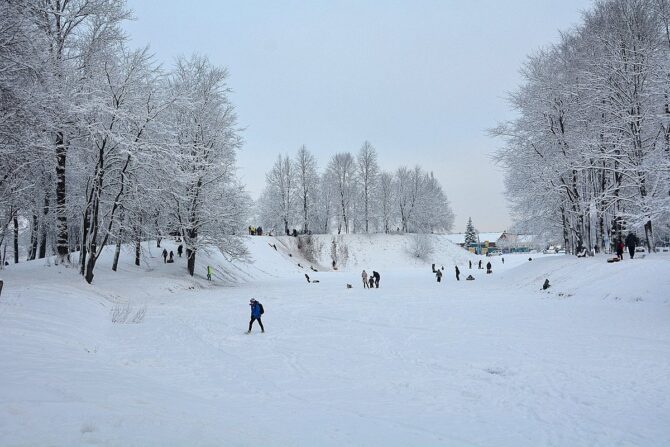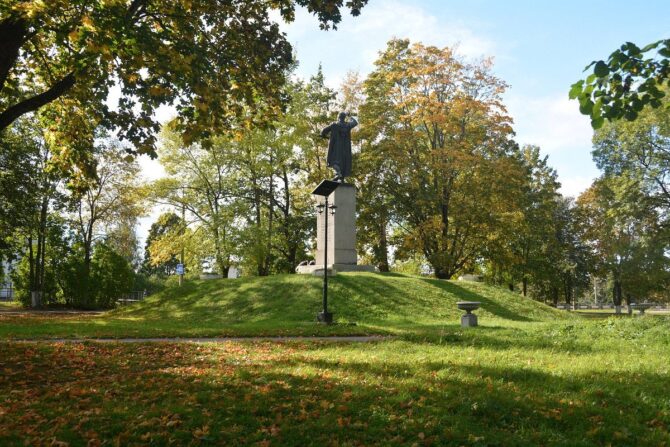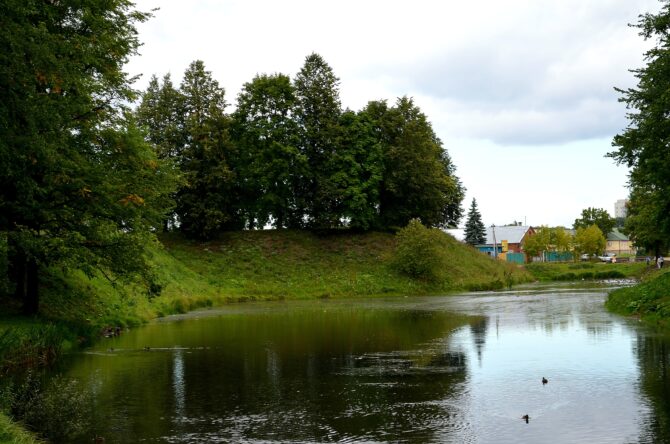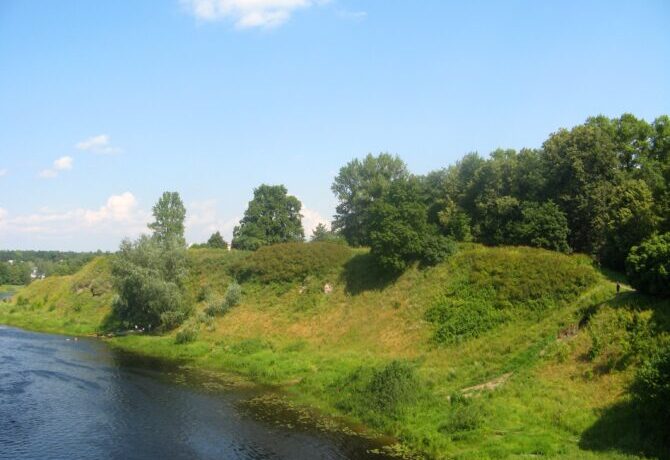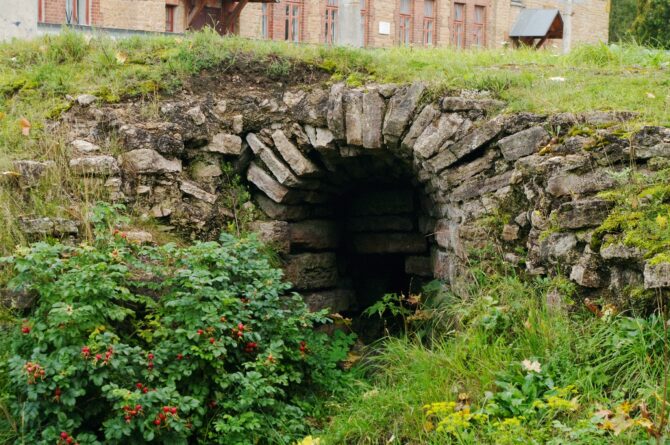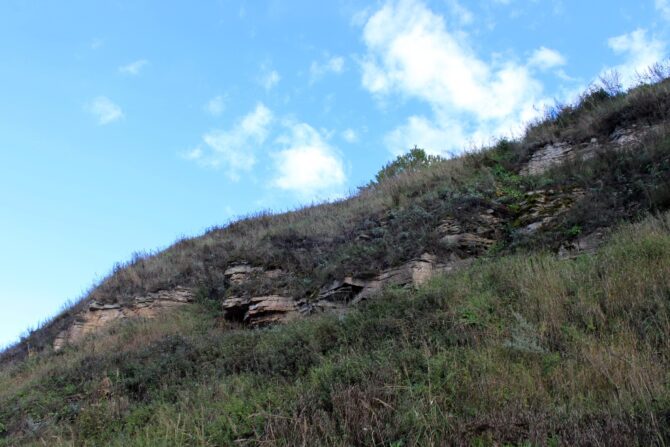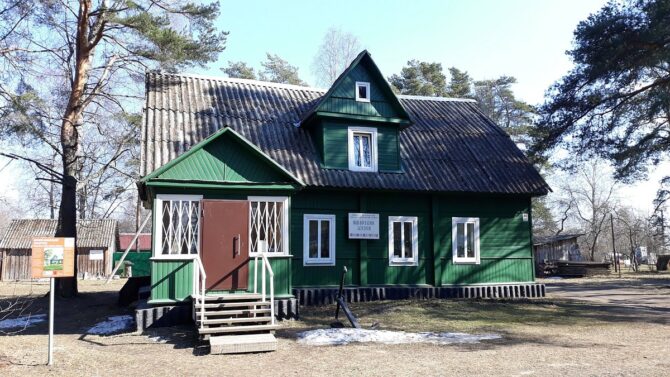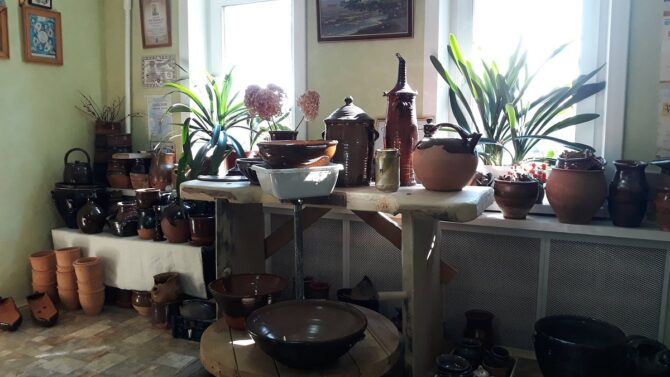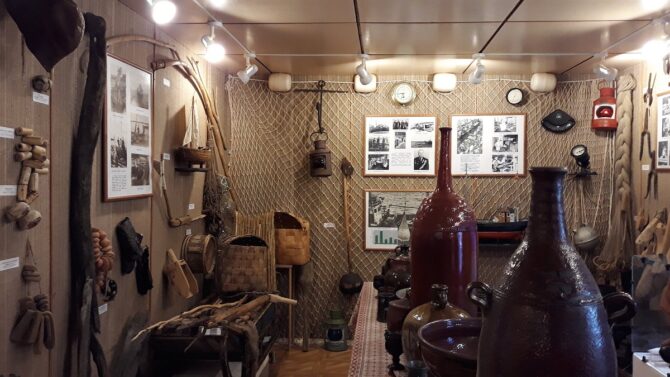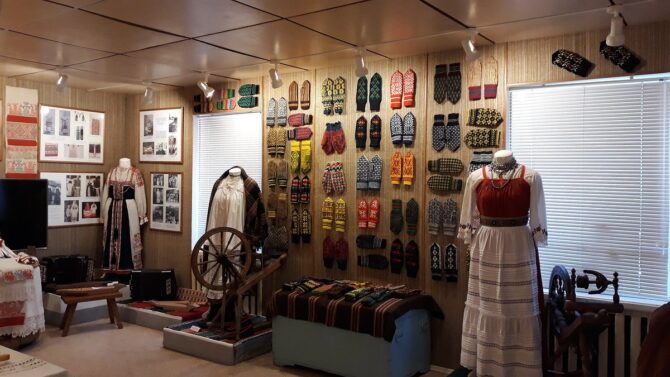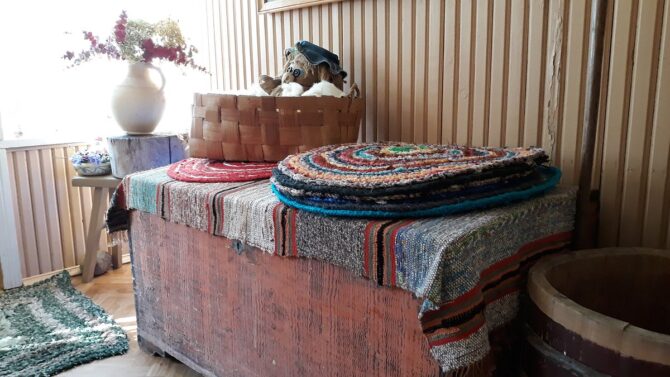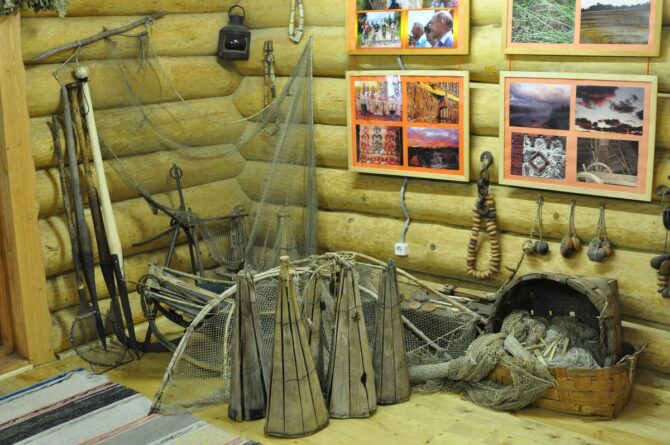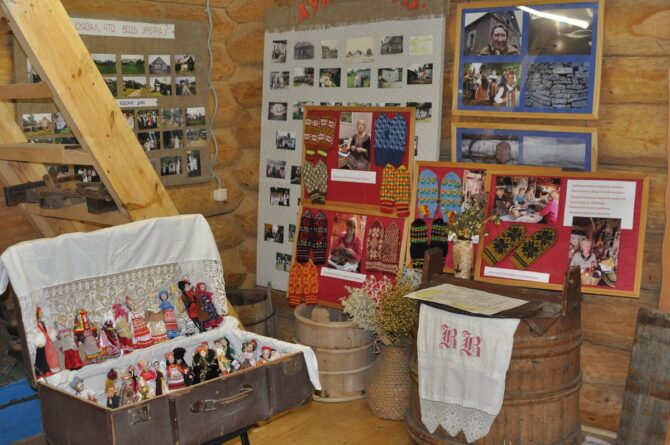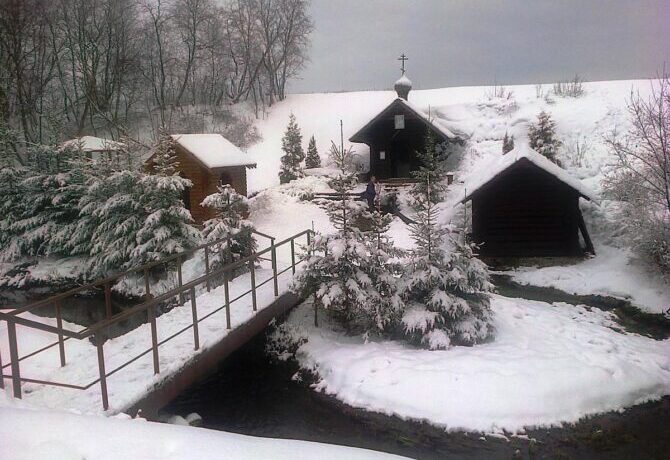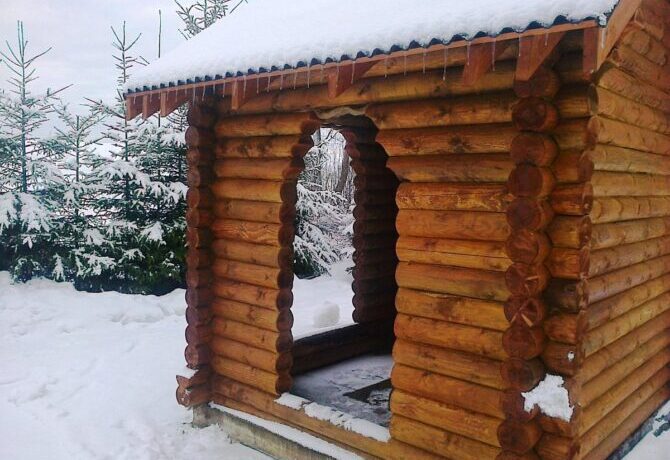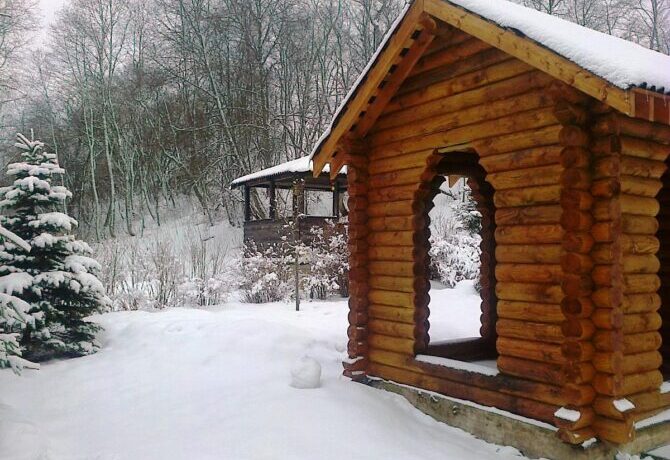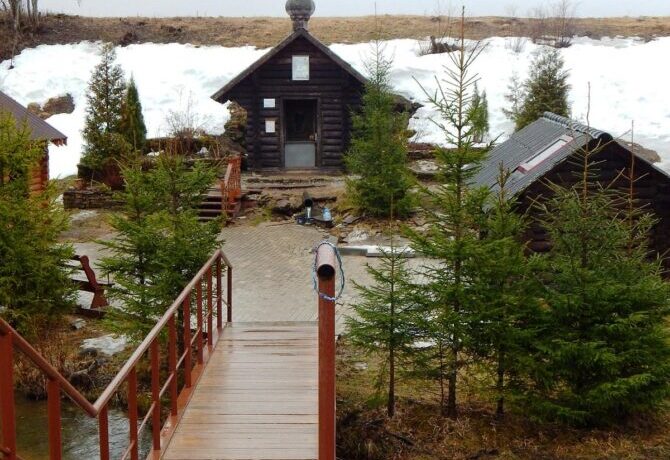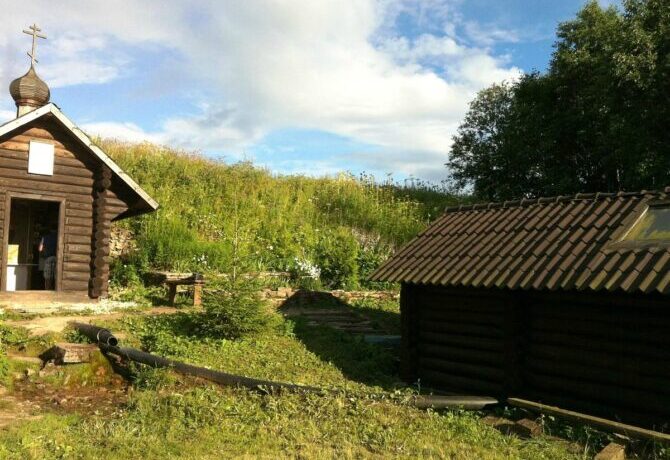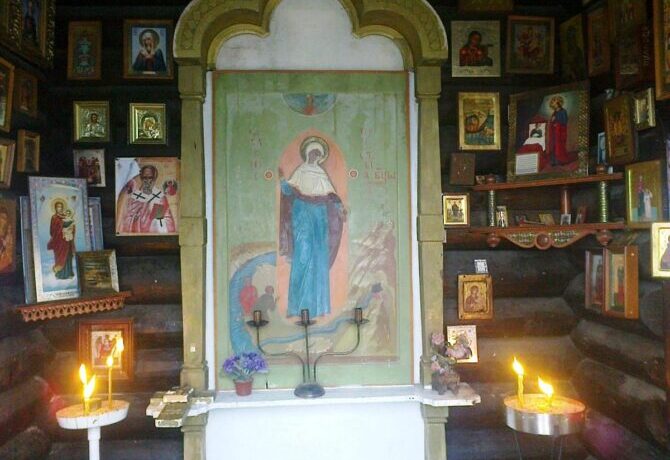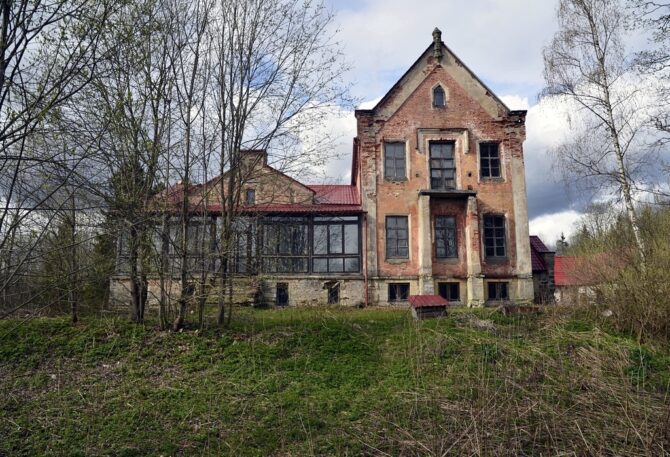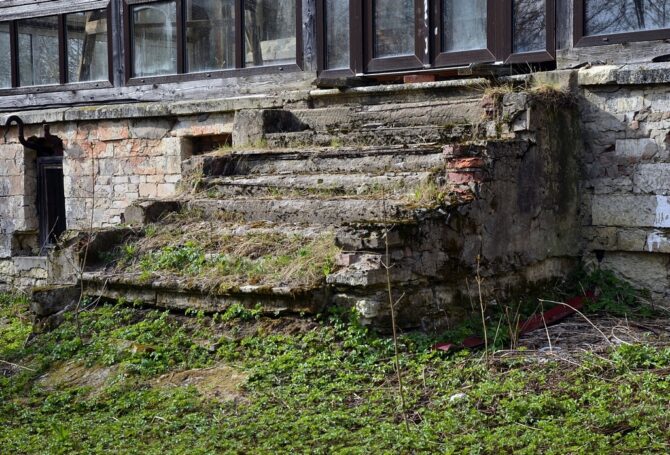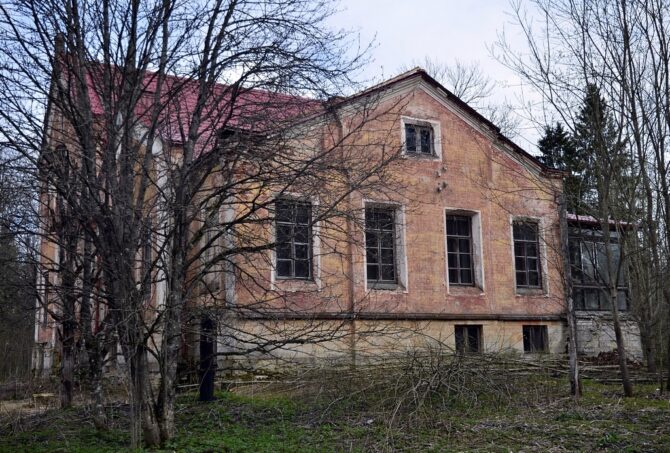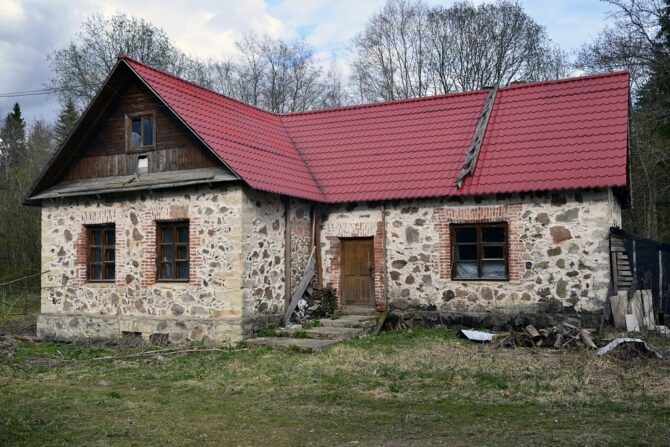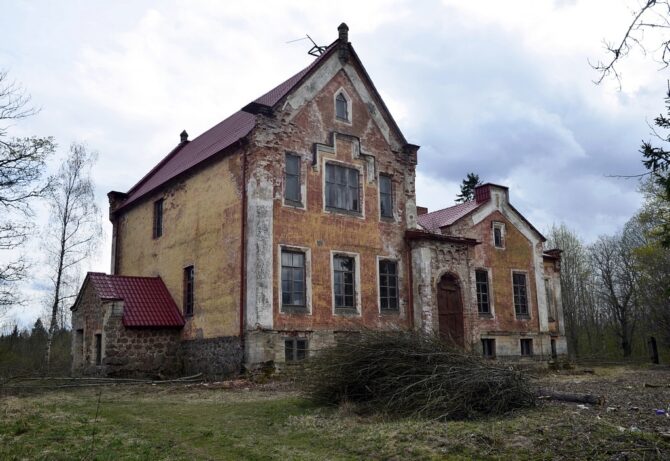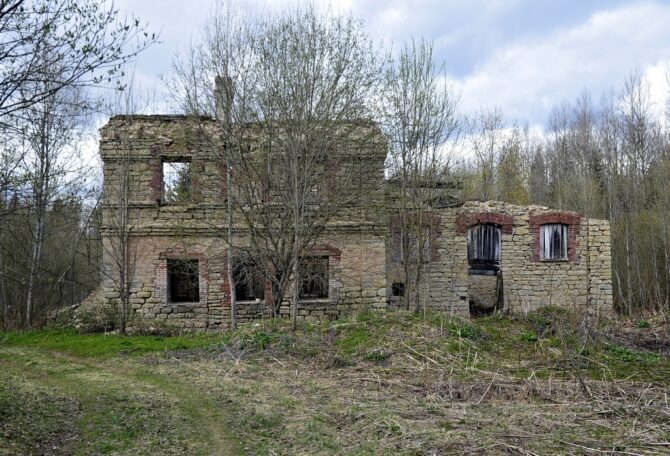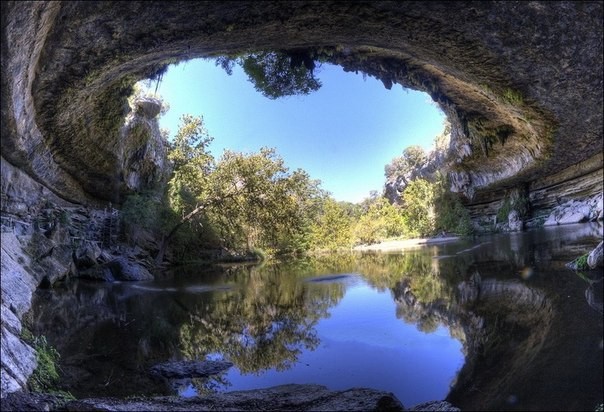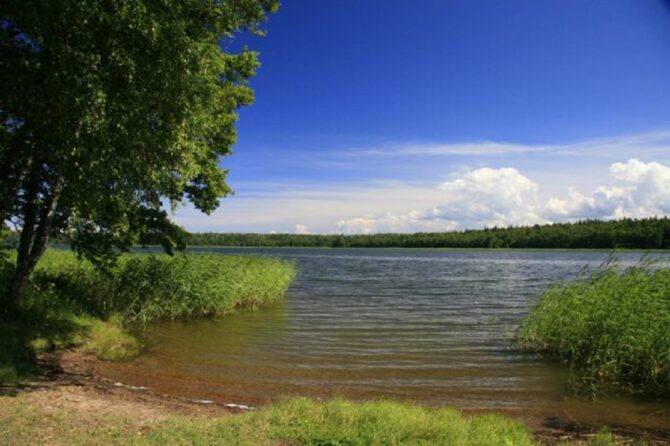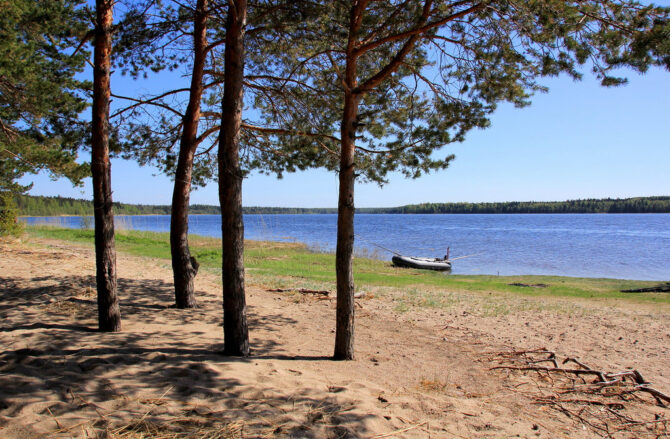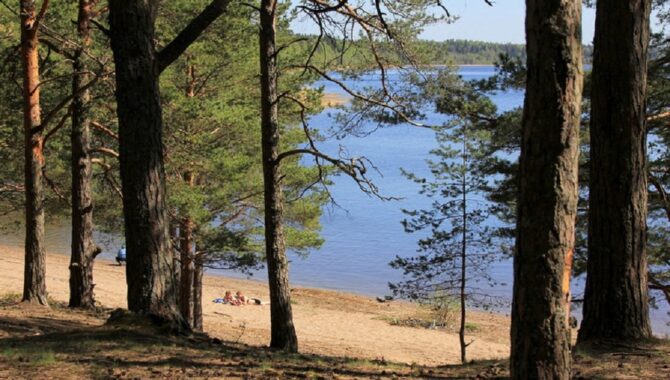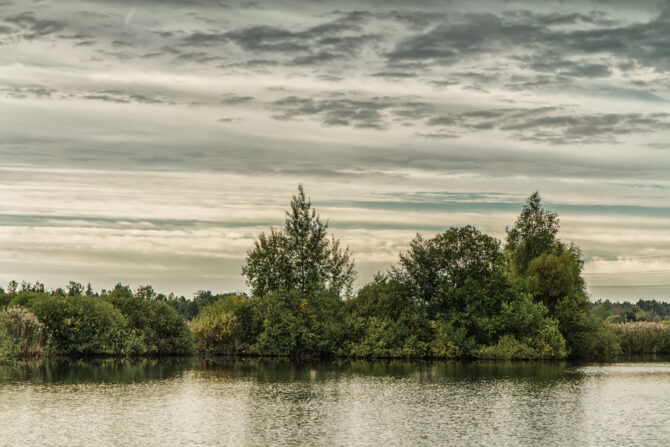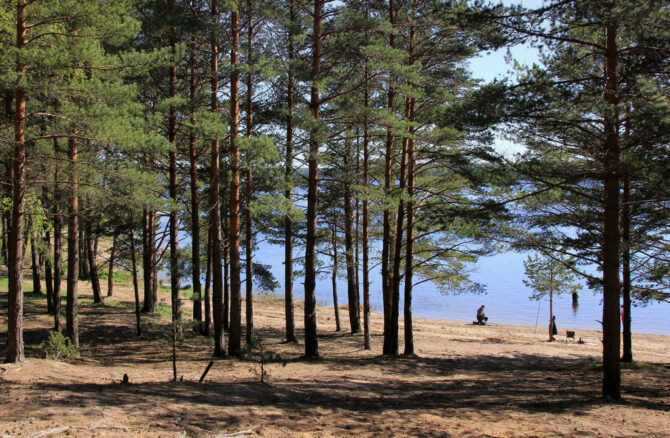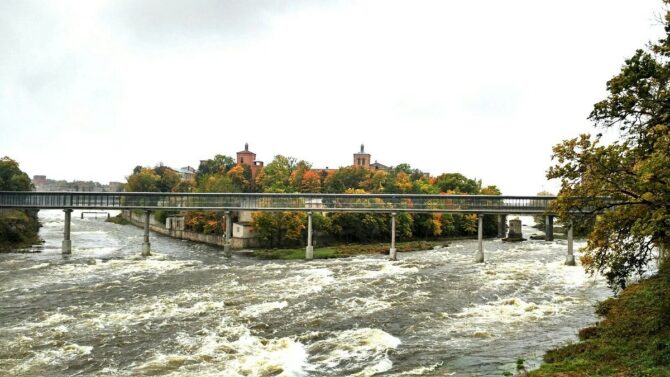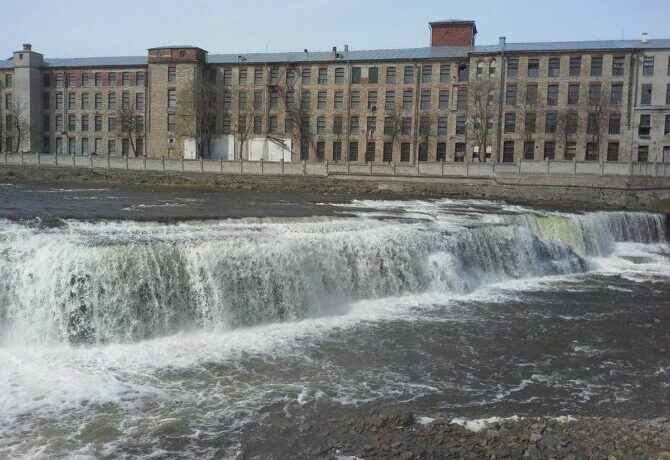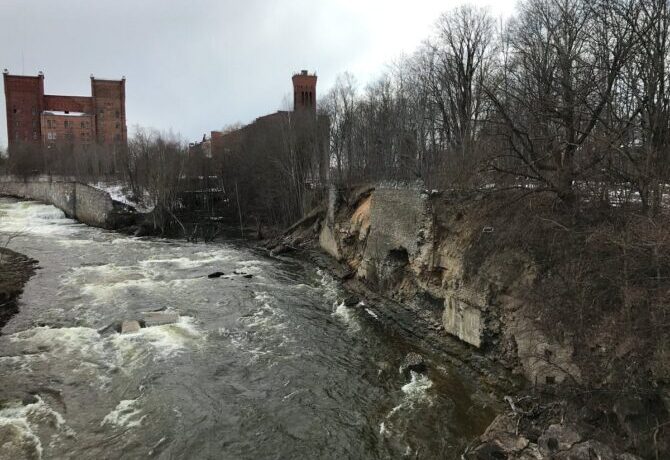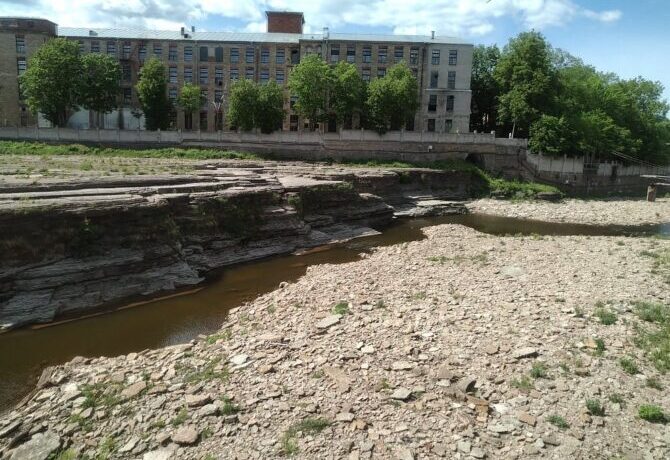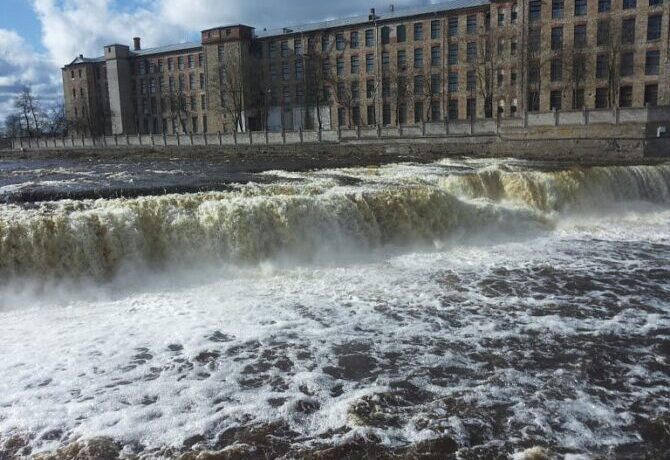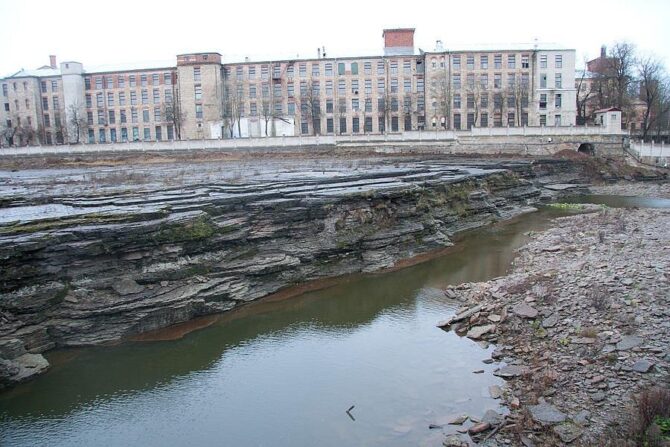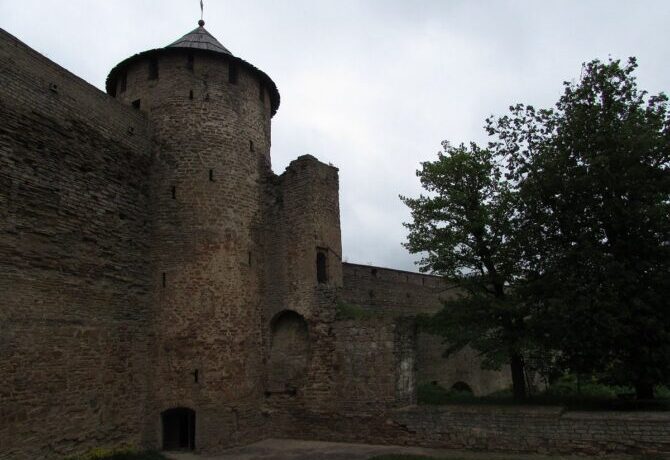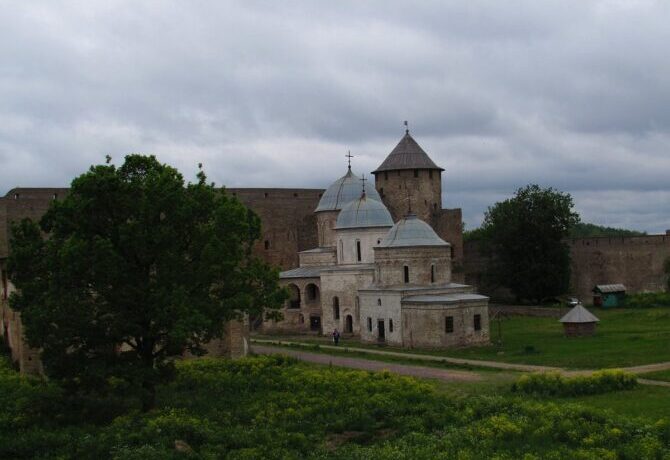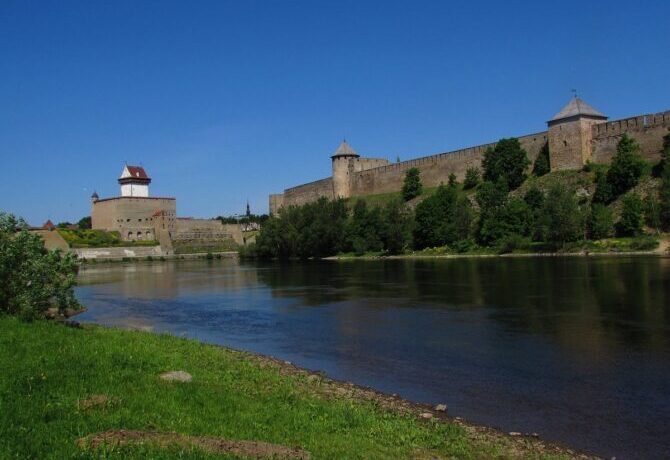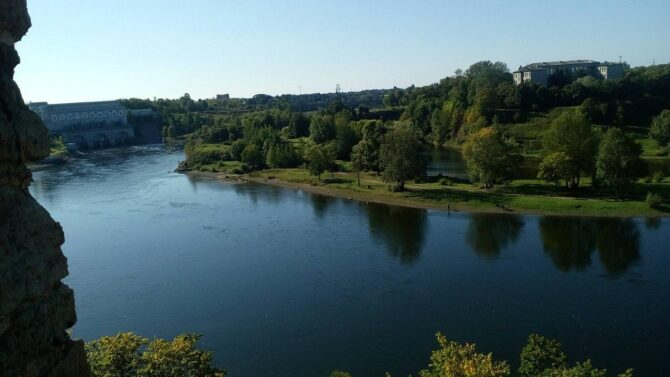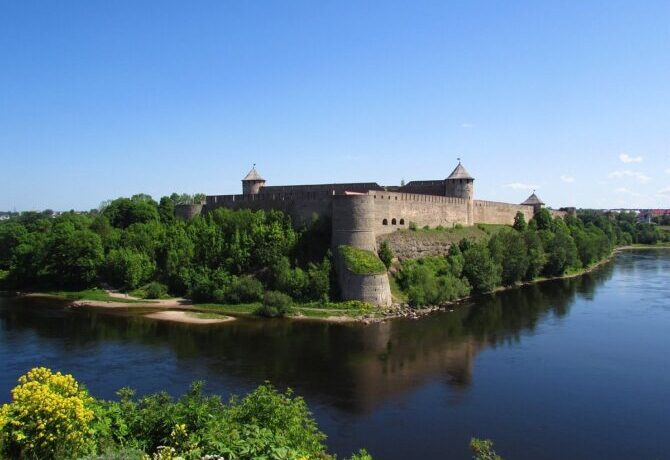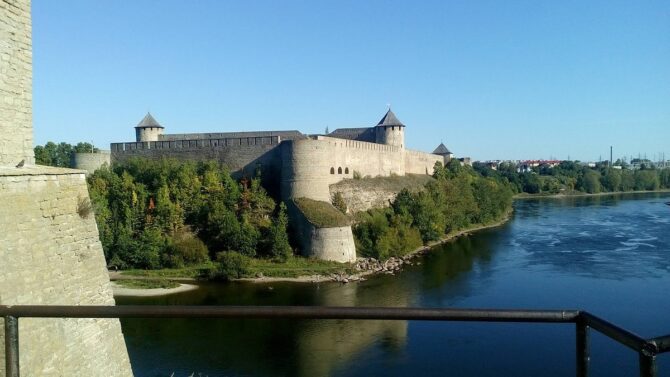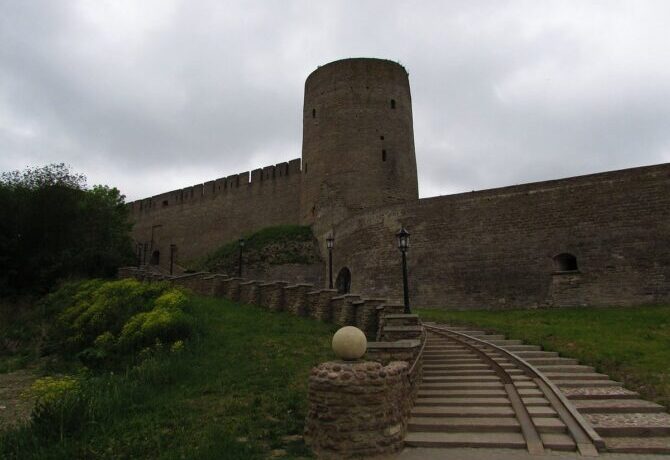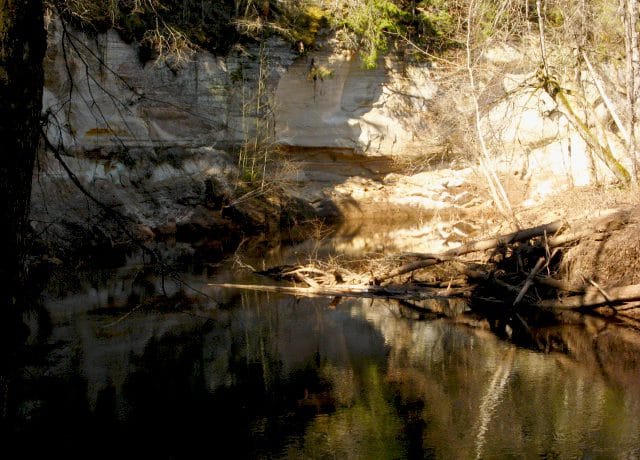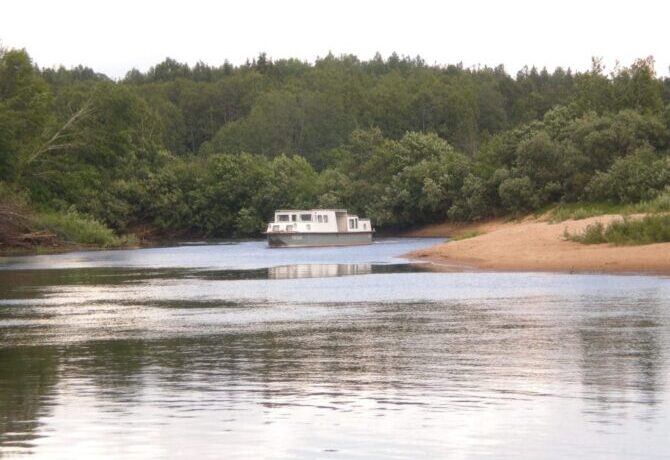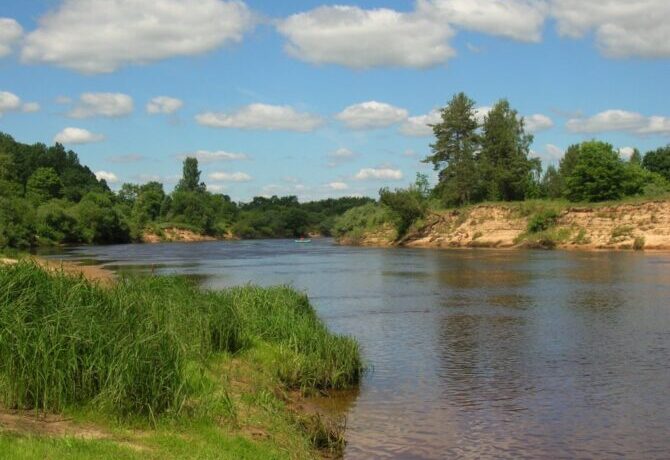The city of Yamburg received a new name in honor of Viktor Kingisepp , a professional revolutionary who lived a double life, violated the laws of Estonia and undermined the foundations of society, and when arrested attacked a policeman. After the end of the trial, the reading of the verdict and the shooting, the Estonian authorities flooded the corpse of Victor in the Baltic Sea. Local historians and local historians have long advocated the return of the historical name to the city, but their opinion has not yet been listened to. Yamburg is a small town 120 km from St. Petersburg, whose residents work in the port of Ust-Luga, go shopping in Estonia, to the border with which is only 25 km. Yamburg can be easily bypassed on foot, walking through numerous squares, parks, alleys, where, due to the abundance of plantations, the air contains a considerable amount of phytoncides. The absence of large-scale industry has a good effect on the environmental situation in the area. In the forests there are many moose, wild boars, foxes and hares. Unfortunately, the old buildings of the pre-revolutionary period are almost not preserved due to the devastating war, but there are some attractions that are worth visiting.
- 1 Attractions Kingisepp on map
- 2 Bronze Lion
- 3 City Hall Building
- 4 Barracks and arena of the 146th Tsaritsyn Infantry Regiment
- 5 St. Catherine’s Cathedral
- 6 Museum of Local Lore in the building of the former Yamburg Commercial School
- 7 Summer Park
- 8 Ruins of Yam Fortress
- 9 Izhora Folk Museum
- 10 Museum of Voda Culture
- 11 Holy spring and stone with the trace of the Mother of God
- 12 Consolation Manor
- 13 Lipovskoe salt lake
- 14 Narva waterfalls
- 15 Fortress “Ivangorod”
- 16 Luga River
Attractions Kingisepp on map
Bronze Lion
The unofficial symbol of the city is a majestic bronze lion on a pedestal, made by order of fellow guardsmen on the grave of their brilliant commander, hero of the Patriotic War of 1812 and Russian-Turkish battles – Karl Ivanovich Bistrom. He was not a warrior, but a real lion, wounded many times in battles, received from the hands of Russian and German emperors and commanders the highest awards for victories over the enemy. There is a monument in the Romanovka Park, where city mass events are often arranged and residents of Yamburg like to walk.
Address: Komsomolovka str., 9.
City Hall Building
One of the few surviving pre-revolutionary buildings in Kingisepp is the building of the former city hall. It was built in 1910. During the Second World Day, the administration of the concentration camp was located in it, about which a sign with a reminder was installed on the facade. From here the prisoners were taken to Finland for logging and other hard labor. During the fighting, the house was badly damaged and only in the 60s was restored according to old drawings. Today there is a dental clinic and other organizations. The building of the town hall was built of red brick with beautiful turrets and unusual window openings, which stands out against the background of faceless Khrushchev and boring new buildings. Recently, an external illumination was installed, thanks to which the house now shines with lights in the dark.
Address: Bolshaya Sovetskaya, 8
Barracks and arena of the 146th Tsaritsyn Infantry Regiment
At the beginning of the 18th century, the buildings of the former Gostiny Dvor of Yamburg attracted the military of one of the regiments, which in many ways lived in the city. After that, the reconstruction of the complex of buildings for barracks began. At that time, the city lived mainly at the expense of the military, who spent their salaries here and used various services. Only the northern part of the complex of this architectural monument of the classical era has survived to this day. Today, in the buildings of the barracks and the arena there are educational institutions and a sports school, so tourists have the opportunity to inspect only the external facades, richly decorated with stucco, coats of arms and decorative elements.
Address: Kingisepp, Karl Marx Avenue, 3.
St. Catherine’s Cathedral
The temple was built on the personal instructions of Empress Catherine II in the style of mixing late Baroque with early classicism. The project was developed by the famous Italian architect Antonio Rinaldi, who is also the author of the third St. Isaac’s and Prince-Vladimir Cathedrals, the Marble and Grand Gatchina Palaces. Recently, a large-scale reconstruction was carried out, after which the temple acquired the external splendor and beauty of the interiors. Many antique icons have been preserved that are available for worship. The magnificentness of the architectural forms and the majesty of the temple building are striking, which are emphasized by the squalor of the surrounding buildings. The cathedral is located at the exit from Kingisepp in the direction of Ivan-gorod. The Great Martyr Catherine, in whose honor the throne was consecrated, was intelligent, educated and very beautiful. When emperor Maximinus, who worshipped pagan gods, decided to persuade and then torture to convert the saint to his faith, she was not afraid to part with brilliant gifts and died in terrible agony. For her open confession of Christianity, she was beaten with ox veins, tortured, and then cut off her head. The Holy Great Martyr Catherine is widely revered in the Orthodox, Catholic and Armenian churches.
Address: Kingisepp, Nikolaev str., 6.
Martha writes a review: “the great master created the cathedral of the MIC. Catherine, which adorns our city. A beautiful view of the building opens from the bridge, and at sunset or before a thunderstorm you can make incredibly beautiful photos. The temple is active, so at the entrance you need to remove the headdress, and women wear a skirt. There is a new Sunday school at the cathedral, where children learn piety.”
Museum of Local Lore in the building of the former Yamburg Commercial School
The Museum of Local History is located opposite the Cathedral of the Great Martyr Catherine in a building built in 1910, which before the revolution was a commercial school. There is a rich and unique collection of exhibits on the history of the peoples of Vodi and Izhora, who once inhabited these lands. Artifacts from the excavations coexist with restored costumes and household items, and jewelry, according to guides, keep traces of women’s tears. For children and adults, there are tables on which they can draw their impressions or real mammoth teeth – the pride of the collection. A separate hall is dedicated to the history of the fortress of Yam, around which the city of Yamburg grew. Exhibits: weapons, chain mail, maps and treasures with jewelry. The guide will tell many stories about wars with the Swedes, bloody battles and months of sieges. The price of the entrance ticket is symbolic.
Address: Karl Marx Ave., 1.
Summer Park
Before the revolution, the regimental garden of the 146th Tsaritsyn Regiment was located on this place. Soldiers planted on the territory of many trees of different species, which rise here to this day. The park area is very picturesque, the alleys are well-groomed, along the paths there are benches and urns. In summer, mothers with strollers walk under the singing of birds, in winter children ride from the slide on cotton candy. Ennobled pond with duckweed and flocks of ducks, which are fed by compassionate residents. For some reason, the Soviet authorities renamed the “Regimental Garden” into the “Park of Workers” and, in addition, built a summer cinema, but the locals burned it. Now the Summer Park is a historical city place where it is pleasant to walk after visiting the museum of local lore and the Cathedral of the Great Martyr Catherine.
Address: Kingisepp, Zhukova street, 1
Ruins of Yam Fortress
In 1384, on the site of the current Summer Park, the fortress of Yam was founded, which was used as a defensive structure against the Swedes. During the wars, it was repeatedly taken by storm, and after the humiliating Stolbovsky Peace, the fortresses of Yam and Ivangorod went to Sweden. Only at the beginning of the 18th century, during the bloody battles of the Northern War, the troops of Peter the Great were able to win back these lands. Under Catherine II, the remains of the fortress yam were finally dismantled. Today, a meadow is blooming on this place, dotted with hare trails, and a pond with ducks turned out from the fortress moat. Only a small fragment of the wall and bastion on the steep bank of the Luga River has been preserved, but access to it is difficult, and there is almost nothing to look at there.
Address: Kingisepp, Zhukova str., 1.
Izhora Folk Museum
In the village of Vistino, which is located on the highway between Ust-Luga and Sosnovy Bor, off the coast of the Luga Bay, in 1993 a museum of the history and culture of the Izhora people was organized. The exposition is located in two halls of a large wooden house of a former rural school. Once a year, the holiday of Izhora culture is celebrated here, which attracts hundreds of guests. On this day, you can taste national cuisine, listen to folk singing, start dancing, work on a potter’s wheel or buy souvenirs. The museum is truly popular: indigenous Izhorians from the surrounding lands donated here the old things of their grandfathers and ancestors. The guide will tell about the life and life of the ethnos, about the customs and customs. The average tour time is 40 minutes. The fee is symbolic, but it is better to agree on a visit in advance by phone so that museum workers are ready for the arrival of guests. Nearby there is a pottery workshop where you can buy hand-made dishes or learn this ancient craft.
Address: Kingisepp district, Ruchy village, Tsentralnaya str., 80.
Museum of Voda Culture
The private museum of the Vod people was created by enthusiasts who preserve the culture and traditions of this disappeared ethnic group from the Finno-Ugric group. The exposition is arranged in a private house with architecture and zoning, accepted by local residents. Only here you can listen to the disappeared Voda dialect, get acquainted with ancient recipes of dishes, talk about the traditions and customs of this culture. The fate of the small ethnic group Vod is very tragic, but interesting. In total, there are several dozen of them living in the north of the Kingisepp district. Before visiting, it is better to call and discuss the time of the visit, since the museum does not work every day. If desired, you can clarify information regarding the conduct of master classes, which are occasionally arranged by local craftsmen. For example, in these classes they teach to harvest ivan tea or weave lapti, cut out of wood or sew something folk.
Address: Leningrad region, Kingisepp district, Luzhitsy village.
Holy spring and stone with the trace of the Mother of God
The stone is a large boulder with several recesses, similar to human footprints. Locals say that there is always water in the recesses, no matter how much it is scooped out. This water is considered curable, so a canopy was erected over the stone. Nearby there is a chapel with icons, where you can pray and ask the Blessed Virgin for something. Another structure is a font for dipping, in which the water always has a temperature of +4 degrees. The complex is well ennobled: bridges and paths made of wood, handrails and plantings are arranged. A pleasant and useful place where you can collect water and plunge, pray in peaceful silence and think about your life.
Address: Leningrad region, Kingisepp district, Pillovo village.
Stanislav N. writes a review: “I went by taxi to Kingisepp and persuaded the driver to stop at the Pochaev source. While looking at the chapel and the traces on the stone, the taxi driver had already plunged and collected water. Then I climbed into the icy water, crossing myself three times. Both received a sea of positivity and grace. Around clean air, neat greenery, wooden buildings and a red cat, who had to give sausages. As a result, the taxi driver thanked me and did not even take a surcharge for the fact that we came here. “
Consolation Manor
The abandoned estate consists of a manor house in the style of English Gothic and a colorful structure for servants. A pond was built nearby, but to go down to it today you need boots. Nearby are the ruins of the Transfiguration Church, everything around is overgrown with sedges and burdocks. The barrier at the entrance and traces of repair work hint that the estate was sold to some investor who suddenly ran out of money. Construction work has long been stopped, some overlaps have collapsed. The estate was built by I.L. Albrecht, colonel of the Semenovsky regiment, and his wife – Ermina Karlova. After the sudden death of their beloved son, a hero of the war of 1812, the couple named the estate “Consolation”, in memory of their beloved people who can no longer be returned.
Address: Leningrad region, Kingisepp district, Lilyno village
Lipovskoe salt lake
The only salt lake in the Leningrad region is a place of constant pilgrimage for vacationers with tents. Around the lake there is a continuous forest, you can drive up only to a large sandy beach. The water is clean and salty, in summer you can swim and sunbathe. In the forest, after prolonged heavy rains, seasonal mushrooms grow. In the lake there is a small fish, which is caught on a bait by gambling fishermen of both sexes. Of the minuses it should be noted the complete lack of infrastructure, incl. toilets, dumpsters and shops. Tourists visit nearby bushes and, hiding behind trees, forget to use a shovel to hide their tracks. Once a day, local huntsmen make a tour of the territory. Also, there are full of vipers that are not afraid of people and crawl around.
Address: Leningrad region, Kingiseppsky district, Ust-Luzhskoye rural settlement
Narva waterfalls
On the border of Russia and Estonia you can see waterfalls on the river Narova (Narva). From the Estonian side, the picturesque and abandoned Krenholm Manufactory, whose territory borders the Parusinka district in the Russian Ivangorod, complements the panoramic view. There have always been waterfalls here, but after the construction of the hydroelectric power station, they now work only during the discharge of water. For example, in spring floods or after prolonged rainfall. In other words, you can not come at any time and admire them. The height of the drop is 6 meters, in addition, the waterfalls are very wide, consist of two sleeves. A good view is possible from the bridge of the border crossing, but the entrance there is strictly according to the documents. If you go behind the building of the water tower, as the locals do, then a good panorama of the island and waterfalls opens.
Address: Leningrad region, Kingisepp district, Ivangorod city, Narva river
Fortress “Ivangorod”
It was founded under Ivan III at the end of the 15th century. The cyclopean size and power of the fortifications impress anyone who comes to see this historical monument. A real combat citadel with powerful towers and thick walls, a height of a five-story house on which you can walk. It offers wonderful views of the Narva Castle, the river and the city. Inside there are large steps, low openings, galleries and loopholes that keep the memory of past battles. In the well-renovated building of the powder warehouse there is a museum of artifacts and history of the fortress, where you can see a collection of exhibits and a historical film, as well as book a tour. The new museum on infrastructure and filling will give odds to the best European counterparts: it is clean and bright, there are interactive zones for children, microscopes and other equipment for a detailed examination of the finds. Among the exhibits are armor, manuscripts, a ship with a secret and a mini-hall about Baron Munchhausen. Inside the fortress there are two ancient churches, one of which is active. Several times a year, in the middle of this atmospheric castle, colorful jousting tournaments are arranged, which, if possible, are definitely worth a visit.
Importantly! Before visiting the border ivangorod, you need to issue a special pass in the border department of the FSB, since the state border passes through this settlement. You need to issue a permit at least two weeks before the trip through the portal of Public Services. You can also contact the hotel or museum complex, which will help to get a pass even faster. In the absence of a special permit or visa, at the entrance to the city tourists are deployed in the opposite direction.
Luga River
The picturesque and beautiful Luga River flows through the territory of the Leningrad and Novgorod regions. Its shores are a favorite vacation spot for residents of Kingisepp and the surrounding area, as well as fishermen who come to catch salmon even from other areas. In addition to it, walleye, pike, asp, chubs and other fish are caught in the channel and ducts. All year round it is allowed to fish only on a float rod, and spinning is possible only in certain periods. Villagers are often engaged in poaching, putting nets on different parts of the river, so there are few fish here. City dwellers have made a mess of the shore of the Luga with garbage, which has been lying here since the 90s, never cleaned by anyone. Clean shores can be found only away from cities or on Estonian territory.
Address: Leningrad region, the city of Kingisepp.
Many travelers combine a tourist trip to these parts with a visit to Estonia, as well as the Gulf of Finland, where you can swim and have a picnic. From St. Petersburg to Kingisepp minibuses and regular buses depart every half hour. The train runs in the morning, returns in the evening, which is convenient for a day trip around the city. Every second Sunday in June in Yamburg is celebrated the day of the city – this is the best time of the year to explore this cute and green place.

